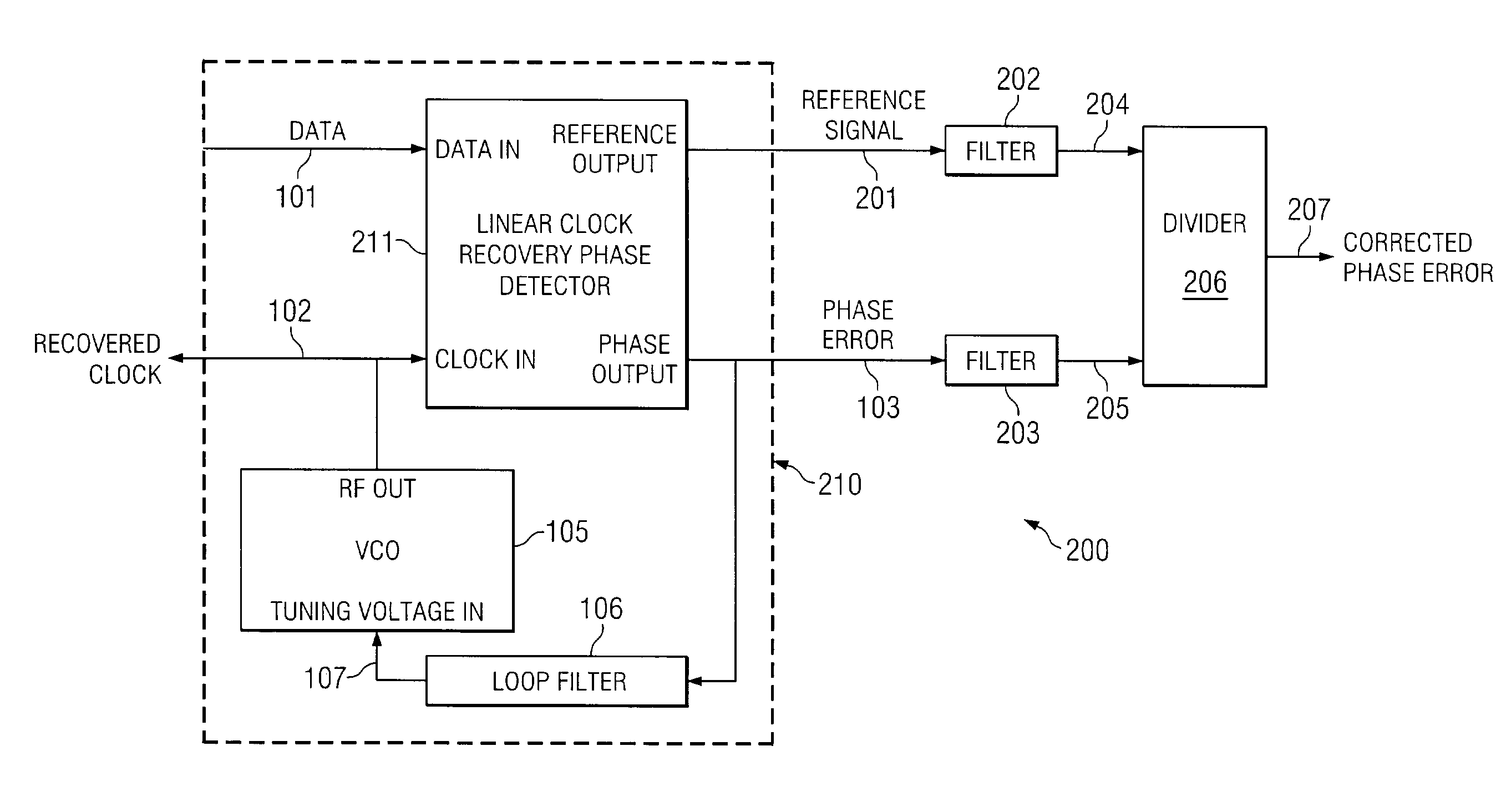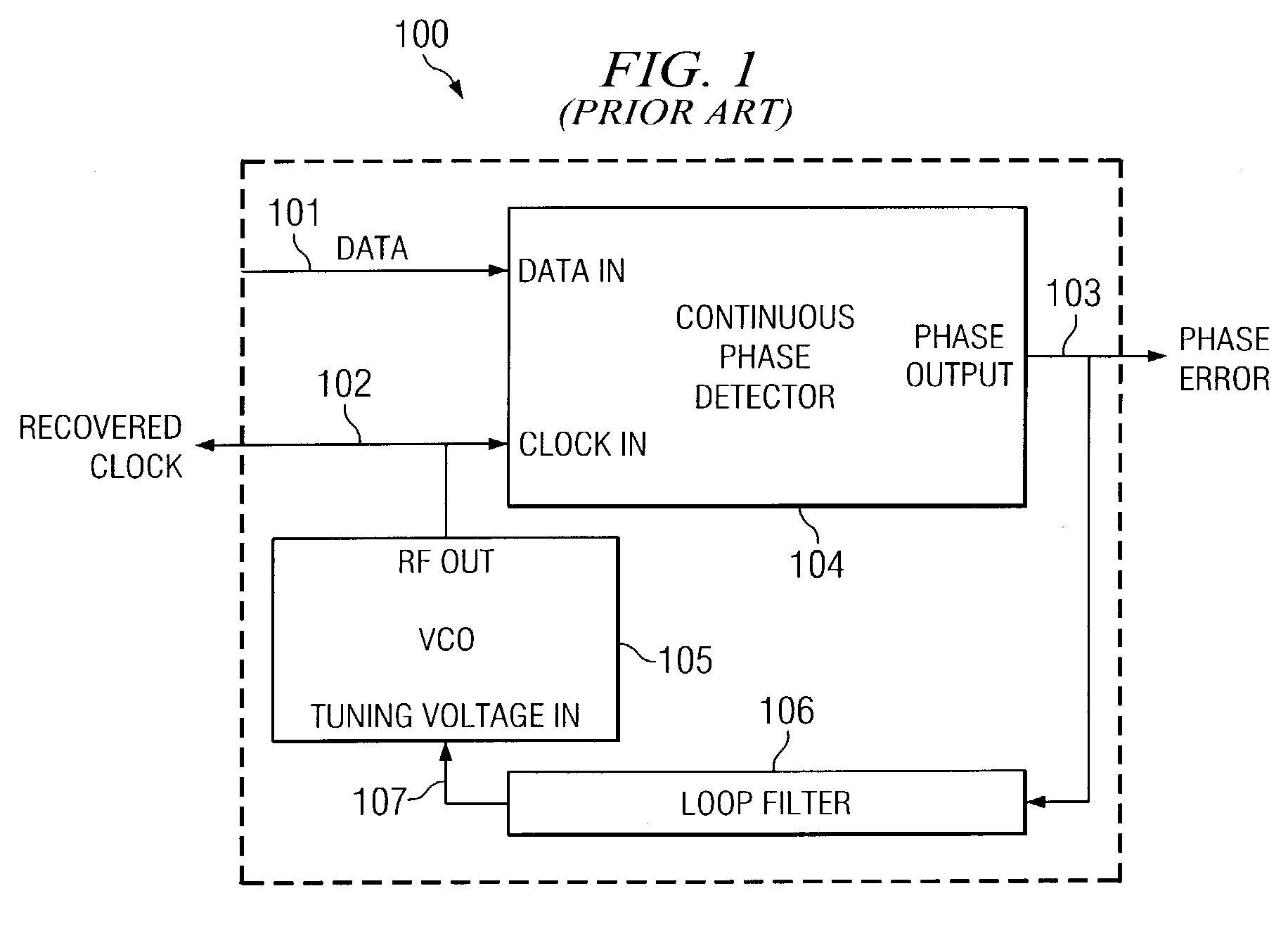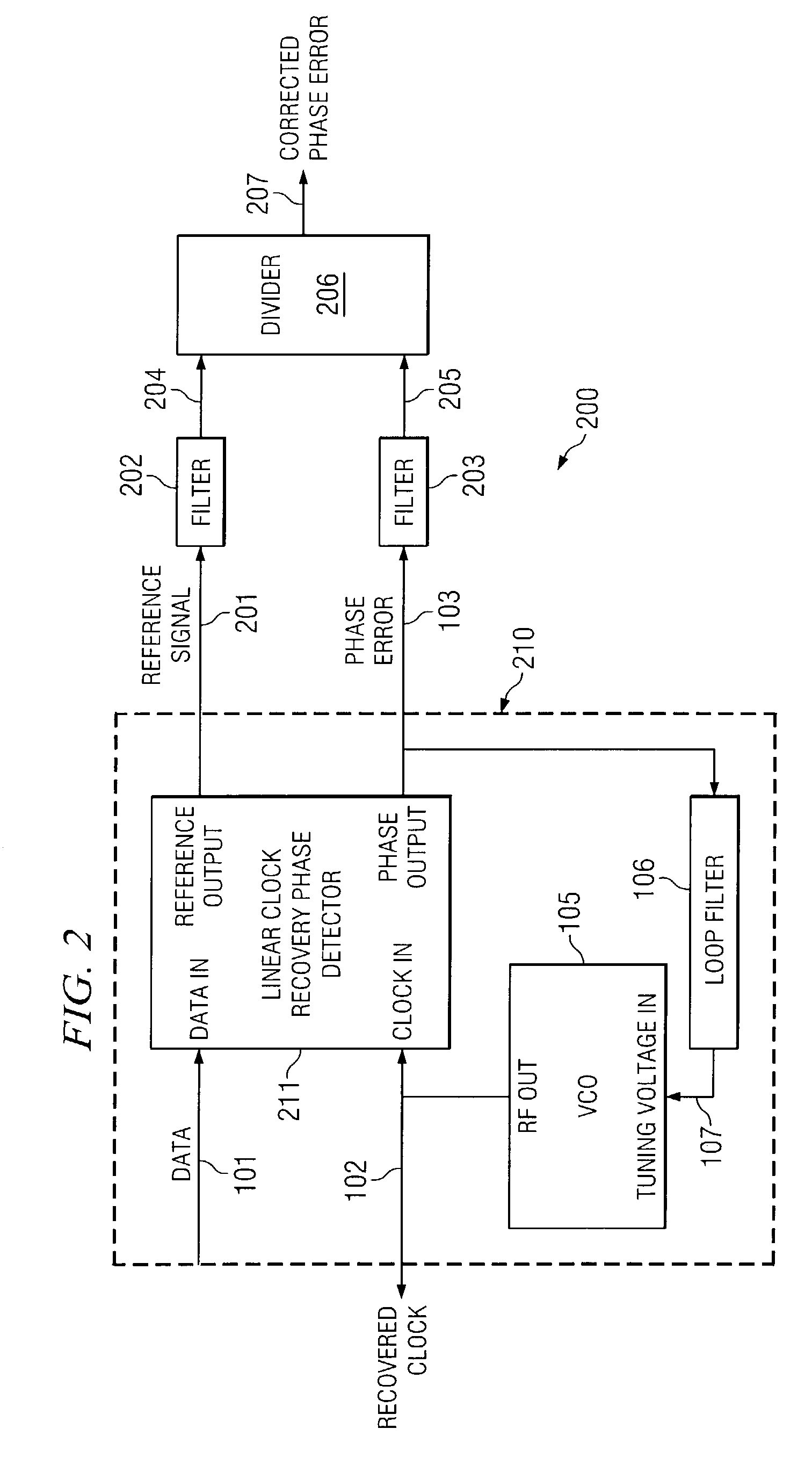Systems and methods for correcting gain error due to transition density variation in clock recovery systems
a clock recovery and gain error technology, applied in the field of processing data streams, can solve problems such as degrading loop performance, unpredictability of pll bandwidth, and uncertainty whether and when a transition will occur
- Summary
- Abstract
- Description
- Claims
- Application Information
AI Technical Summary
Problems solved by technology
Method used
Image
Examples
Embodiment Construction
[0015]Before discussing embodiments in accordance with the invention in greater detail, a discussion of Nyquist's sampling theorem is presented for the convenience of the reader. The Nyquist sampling theorem is related to the problem of reconstructing a continuous analog waveform utilizing only discrete samples of that waveform's voltage taken at uniform time intervals. In Nyquist's sampling theorem, an assumption is made that the continuous analog waveform is bandlimited, meaning that there are no frequencies contained in the waveform that exceed an upper bound frequency (which defines the Nyquist bandwidth). Utilizing this assumption, Nyquist was able to prove that the continuous analog waveform can be perfectly reconstructed from these samples, if and only if the sampling rate is at least twice the Nyquist bandwidth. This sampling rate is referred to as the Nyquist rate. In practice, a phenomenon known as “aliasing” requires the sampling rate to be slightly higher than Nyquist's ...
PUM
 Login to View More
Login to View More Abstract
Description
Claims
Application Information
 Login to View More
Login to View More - R&D
- Intellectual Property
- Life Sciences
- Materials
- Tech Scout
- Unparalleled Data Quality
- Higher Quality Content
- 60% Fewer Hallucinations
Browse by: Latest US Patents, China's latest patents, Technical Efficacy Thesaurus, Application Domain, Technology Topic, Popular Technical Reports.
© 2025 PatSnap. All rights reserved.Legal|Privacy policy|Modern Slavery Act Transparency Statement|Sitemap|About US| Contact US: help@patsnap.com



